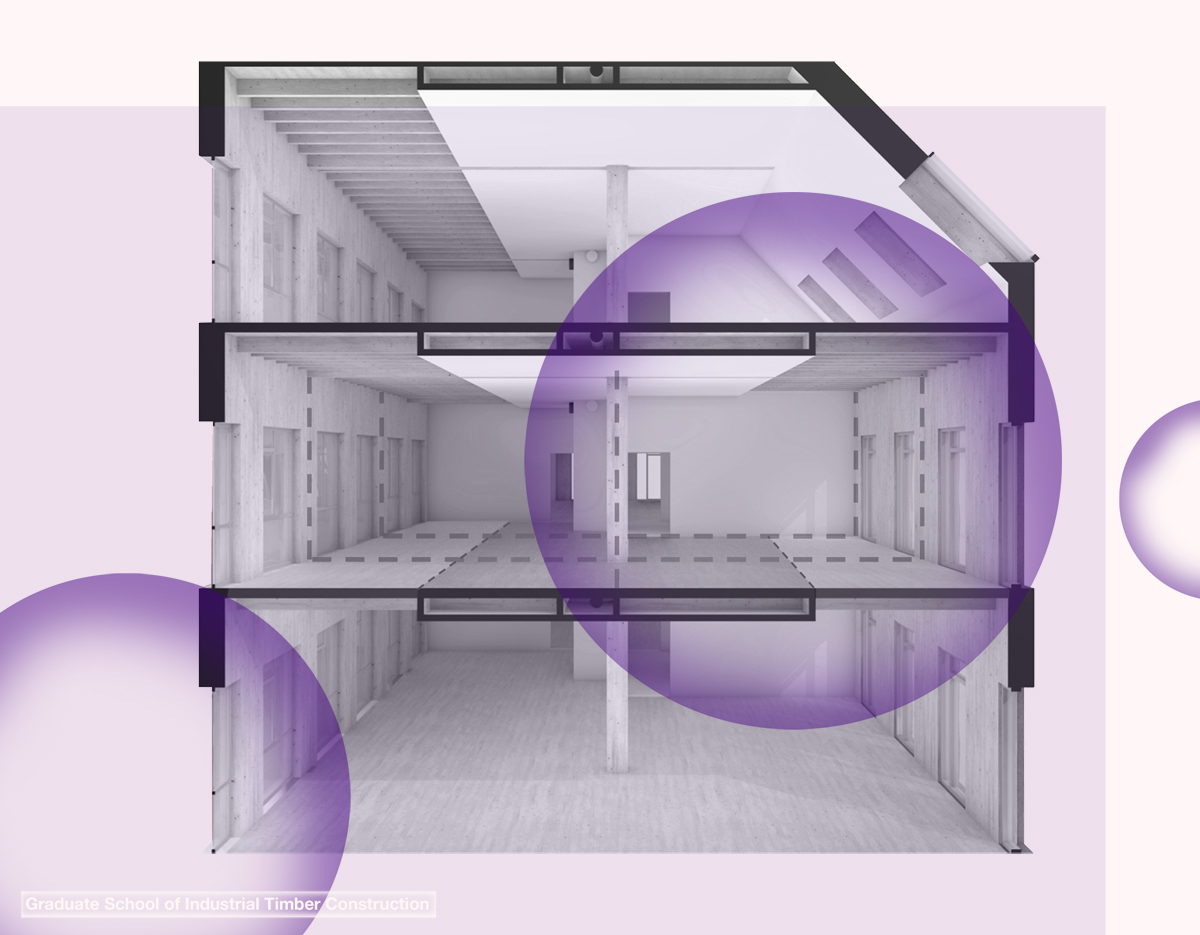Project 1
Impact sound insulation of wooden floors

Jesse Lietzén
Calculation of impact sound insulation of wooden intermediate floor structures. Jesse’s work in the development of acoustic computational models also gets excellent synergy from his second role as a project manager in the Department of Acoustical Engineering AINS Group (A-Insinöörit). Acoustics is a very important aspect in timber construction, so Jesse’s work is to enable competitiveness of wooden structures in this perspective.
Project 2
Fire and Load Bearing Wood

Mika Alanen
Auto-extinction of load-bearing wooden structures and engineered mass timber products fire behaviour. In his work, Mika deals with one of the key aspects of wood construction, ie fire safety and fire design parameters. In addition to the graduate school, Mika works in our own fire laboratory and is responsible for fire testing and research there.
Project 3
Real-estate Development

Juha Franssila
Value networks in real estate development in wooden apartment building construction. Juha has started his dissertation research at the faculty before, but he has also been integrated into the graduate school. The aim of Juha’s work is to produce new information about the management of wooden apartment building networks and value creation phenomena from the perspective of long-term cooperation.
Project 4
Calculation method for a slim – floor steel – timber composite structures
– Developing the Nordic system

Aku Aspila
During the last decade, steel–timber composite floors have been actively studied because of their capacity to offer material-efficient floor constructions. These structures are usually constructed by using steel and engineered wood products such as cross-laminated timber (CLT). This research focuses on exploring the possibilities of industrial wood constructions in slim – floor steel – timber composite floors. Now, there exist no generally accepted design rulers for these structures, so the main goal of this research is to determine the general analytical calculation method for slim-floor steel-timber composite floors. Also, the benefits of this system are investigated from structural, environmental and construction phase points of view
Project 5
Industrial Wood and Architecture

Antti Tuure
The impact of structural systems of residential mid-rise timber buildings on housing design and on the cityscape. Antti’s work examines the architectural design considerations in relation to the structural behaviour of the building. This research also focuses on design flexibility of different structural systems, which also reflects to the adaptability of the building itself. Antti has worked on the same topics at TUPA architecture Oy.
Project 6
Advantages of Wood in Housing Construction

Harri Sivu
Components of competitiveness in wooden housing construction. As wood construction has emerged as a viable option in apartment building construction, its competitiveness will be further weakened by certain traditional processes, calculation methods and contractual technical aspects that are not suitable for wood construction as such. Harri’s work addresses these areas and brings about solutions that enhance the competitiveness of wood construction. Harri wrestles with the same challenges in his everyday operations at his company called Harristo.
Project 7
Multi-storey Timber Housing and Circular Economy

Ninni Westerholm
Multi-storey timber housing through the circular economy lens. Ninni evaluates modern wood construction methods from the circularity point of view and strives to provide a framework for how to design and construct more sustainable timber housing for urban environments. Her research goes further than only looking for more sustainable ways to build out of wood, she also maps how our system prevents, hinders or complicates sustainable development and how the system should change in order to boost circular timber construction. In addition to her research work, Ninni works as architect, sustainability consultant, and developer of LCA tools.
Project 8

Teemu Hirvilammi
Potential for Industrial Bamboo Housing: Reflecting Wood and Bamboo Structural Systems for Sustainable Housing in Urban Chinese Context. The impact of structural systems of residential mid-rise timber buildings on housing design and on the appearance in cityscape – and reflecting that potential to bamboo.
Teemu Hirvilammi is a University Instructor for architectural constructions in Tampere University and a Visiting Professor at Guangdong University of Technology. Teemu has also a long experience for entrepreneurship, and is a practicing architect via his own office, Hirvilammi Architects Ltd.
Project 9
Timber construction digitalization and automatization

Jari Saukko
Timber construction is at a turning point. More and more of the sub-assemblies of the construction will be done in an industrial manner. Jari’s educational background is in the engineering of automation, electronics, and the production economy. His research includes component level assembly of building automation Management System (BMS), technical systems like Heating, Ventilation, and Air Conditioning (HVAC) systems and IOT (Internet Of Things) sensors in timber construction production line. Digital part of the research covers data integration plan and local wise signal processing inside the building, digital twins, cyber security, data resilience, simulations of the production line performance. Regulation, like EPBD2021 (the Energy Performance of Buildings Directive) with SRI (Smart Readiness Index) shall be enabled also in component and digital environments. The question is, how to enable cost-effective and high-performance timber building automation and technical systems assembly during manufacturing including both sides of the coin, both physical and digital solutions.

